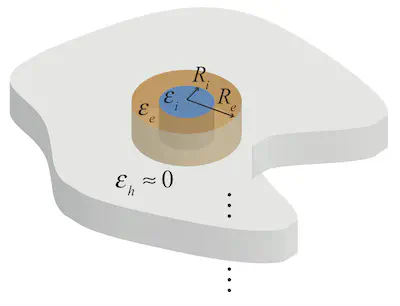
Abstract
In solid-state physics, doping is a pivotal concept that allows controlling and engineering of the macroscopic electronic and optical properties of materials such as semiconductors by judiciously introducing small concentrations of impurities. Recently, this concept has been translated to two-dimensional photonic scenarios in connection with host media characterized by vanishingly small relative permittivity (epsilon near zero), showing that it is possible to obtain broadly tunable effective magnetic responses by introducing a single, nonmagnetic doping particle at an arbitrary position. So far, this phenomenon has been studied mostly for lossless configurations. In principle, the inevitable presence of material losses can be compensated via optical gain. However, taking inspiration from quantum (e.g., parity-time) symmetries that are eliciting growing attention in the emerging fields of non-Hermitian optics and photonics, this suggests considering more general gain-loss interactions. Here, we theoretically show that the photonic doping concept can be extended to non-Hermitian scenarios characterized by tailored distributions of gain and loss in either the doping particles or the host medium. In these scenarios, the effective permeability can be modeled as a complex-valued quantity (with the imaginary part accounting for the gain or loss), which can be tailored over broad regions of the complex plane. This enables a variety of unconventional optical responses and waveguiding mechanisms, which can be, in principle, reconfigured by varying the optical gain (e.g., via optical pumping). We envision several possible applications of this concept, including reconfigurable nanophotonics platforms and optical sensing, which motivate further studies for their experimental validation.